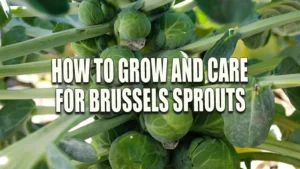How to Grow and Plant Rice Effectively: Expert Advice for Every Stage
- May 4, 2024
- 0 comment
Learn how to grow and plant rice effectively with our expert advice. Follow proven tips for every stage to ensure healthy growth and abundant yield. Growing rice can be a rewarding venture when done right. In this comprehensive guide, we delve into the best practices for planting and nurturing rice from seed to harvest.

With expert advice tailored for every stage of growth, you’ll learn how to maximize your rice yield and ensure healthy crops. Read on to transform your rice-growing skills and achieve bountiful results.
Table of Contents
- Understanding Rice Cultivation
- Pre-Planting Preparation
- Planting Techniques
- Step-by-Step Planting Guide
- Growth and Maintenance
- Harvesting and Post-Harvest
- Plant to Plant and Row to Row Distance in Rice Cultivation
- Challenges and Solutions
- Innovative Practices in Rice Cultivation
- Conclusion
- FAQs
Understanding Rice Cultivation
Types of Rice

Rice is one of the most diverse grain crops, with over 40,000 varieties cultivated worldwide. The choice of variety is crucial because it affects everything from the agronomic characteristics to the cooking quality of the rice. Here are some of the most widely cultivated types, each adapted to specific culinary needs and environmental conditions:
- Long-grain rice: This type is characterized by its long, slender grains that expand in length when cooked but remain distinct. Popular varieties include American long-grain white and Basmati. It is ideal for dishes like pilafs and salads where loose, fluffy rice is preferred.
- Short-grain rice: Known for its short, almost round grains, this type becomes soft and sticky when cooked, which makes it perfect for sushi and sweet rice-based desserts. Examples include Japanese sushi rice and Arborio.
- Aromatic rice: These varieties are known for their nutty aroma and flavor, which make them stand out in dishes. Jasmine from Thailand and Basmati from India and Pakistan are the most popular. They are often used in aromatic dishes across various cuisines.
The following table provides a quick comparison of these types based on key characteristics:
| Rice Type | Grain Length | Texture When Cooked | Common Uses |
|---|---|---|---|
| Long-grain | 6-8mm | Fluffy and separate | Pilafs, salads |
| Short-grain | 5mm or less | Sticky and soft | Sushi, desserts |
| Aromatic | 6-8mm | Light and fluffy | Ethnic cuisines |
Climate and Soil Requirements
Rice cultivation typically requires a warm climate, with optimal growth temperatures ranging from 20°C to 40°C. The plant is highly adaptable but thrives in regions with abundant sunlight and a long growing season.
- Water Requirements: Rice is unique in its need for a large amount of water, often grown in paddies that are deliberately flooded. This flooding helps to suppress weeds, cool the soil, and facilitate nutrient uptake.
- Soil Type: The ideal soil types for rice are clays or silty clays, which have good water-retaining properties. These soils help maintain the flooded conditions that rice needs without leading to waterlogging and root rot.
Here’s a deeper look into the soil science:
- Soil pH: Rice grows best in slightly acidic to neutral soil, typically with a pH of 5.0 to 7.0. Lime may be added to more acidic soils to increase the pH, whereas sulfur might be used to decrease the pH of alkaline soils.
- Nutrient Management: Balanced nutrition is critical. Nitrogen, phosphorus, and potassium are the primary nutrients required, but the specific amounts depend on the expected yield and the inherent soil fertility. A soil test is advisable to tailor the nutrient management plan accurately.
- Advanced Nutrient Techniques: Employing precision agriculture techniques can optimize nutrient application. For example, the use of controlled-release fertilizers can improve the efficiency of nutrient use and minimize environmental impact.
Pre-Planting Preparation
Choosing the Right Rice Variety

Selecting the most suitable rice variety is fundamental to the success of your crop, and this decision should be informed by an in-depth understanding of local climatic conditions, soil characteristics, and water availability. Each rice variety comes with distinct genetic traits that tailor it to specific environmental conditions and cultivation goals.
Indica Varieties
Indica rice, predominantly grown in the tropics, is characterized by its long, slender grains that remain non-sticky after cooking. This variety is notably heat-tolerant and requires a substantial amount of water, flourishing best in regions where temperatures are consistently high, and water can be reliably supplied throughout the growing season. Ideal for flooded conditions, Indica varieties typically achieve higher yields due to their rapid growth rate and robust stature.
- Climate Suitability: Best in areas with a long warm season.
- Water Needs: High, with a preference for flooded paddies.
- Yield Potential: Generally higher compared to other rice types.
Japonica Varieties
Japonica rice thrives in more temperate climates and is well-suited to areas with cooler growing conditions. These grains are shorter and rounder, becoming sticky when cooked, which makes them ideal for dishes where a cohesive texture is preferred, such as sushi or rice balls. Japonica’s hardiness extends to its tolerance of lower temperatures and its ability to produce well even with modest water supply, which may be beneficial for regions facing water-use restrictions.
- Climate Suitability: Cooler regions with shorter growing seasons.
- Water Needs: Lower than Indica, adaptable to less controlled water conditions.
- Culinary Preference: Preferred in East Asian cuisines for its sticky texture.
Hybrid Varieties
Hybrid rice results from crossing two genetically diverse parents to produce a new variety that combines desirable traits from both, such as higher yield, improved taste, and enhanced resistance to diseases and pests. These varieties are engineered to perform robustly across diverse environmental settings, offering a solution for farmers in areas with fluctuating climatic conditions.
- Broad Adaptability: Engineered to perform well in both tropical and temperate zones.
- Enhanced Traits: Includes higher yields, disease resistance, and sometimes tolerance to suboptimal growing conditions.
- Resource Efficiency: Often requires less water and fertilizer compared to pure strains.
Research and Consideration
Before planting, it’s crucial to consult with local agricultural extension services or utilize agricultural data on climate, soil, and water conditions specific to your region. This research helps ensure that the chosen variety aligns perfectly with the local ecosystem, optimizing growth and yield.
- Local Variability: Consider microclimate variations even within small geographical areas.
- Soil Testing: Conduct soil tests for nutrient content and pH level to tailor your soil management strategies effectively.
- Future Climate Considerations: With changing climate patterns, selecting varieties with broader tolerance ranges can be a prudent choice.
By carefully selecting a rice variety that suits the specific conditions of your cultivation area, you enhance the chances of achieving a successful and bountiful harvest. This strategic decision not only impacts the immediate crop cycle but also influences long-term agricultural productivity and sustainability.
Planting Techniques
Methodologies

When it comes to planting rice, farmers can choose from two primary methods, each offering distinct advantages and suiting different agricultural environments and resources.
Transplanting Transplanting is a process where seedlings are first grown in a dedicated nursery area. After about three to four weeks, or once they reach a height of about 15-20 cm, these young plants are carefully moved to the flooded fields. This method is labor-intensive but has several benefits:
- Enhanced Weed Control: Transplanting in flooded conditions suppresses the growth of most weed species, which cannot survive under waterlogged conditions.
- Improved Plant Health: Seedlings develop stronger root systems in the nursery before facing the outer environment, leading to better overall plant health.
- Economical Seed Use: Because seedlings are carefully managed in a nursery, the seed rate can be significantly reduced compared to direct seeding.
Direct Seeding Direct seeding involves sowing seeds directly in the field, either manually (broadcasting) or using mechanical seed drills. This method is becoming increasingly popular due to its cost and time efficiency.
- Reduced Labor and Time: Eliminates the nursery stage, directly introducing seeds to the field, which cuts down on labor and accelerates the planting process.
- Flexibility in Planting: Suitable for both dry and wetland conditions, although it requires different management strategies for each setting.
- Challenges: Requires meticulous management to control weeds and pests, which can compete with the young rice plants for nutrients and light.
Timing
The timing of rice planting is critical and should align with climatic conditions to maximize the growth potential and yield of the crop.
- Tropical Regions: In areas with a year-round warm climate, rice can be planted multiple times per year. The start of the rainy season is often chosen to take advantage of natural water availability.
- Temperate Regions: In cooler climates, rice planting is best timed in late spring or early summer to ensure that crops benefit from the longest possible period of warm weather and avoid the risk of frost damage.
Microclimate Considerations Understanding local microclimates is essential as they can significantly influence the optimal planting time. For example, valley regions might experience later frosts, or coastal areas might have saline influences that affect germination and early growth.
Technological Aids Farmers are increasingly using agronomic models and weather forecasting tools to more accurately predict the best planting times. These tools can analyze historical climate data and current weather patterns to provide recommendations that optimize planting schedules.
Best Practices
- Prior to planting, ensure the soil is properly prepared, plowed, and harrowed to achieve a fine tilth, which is essential for good seed-soil contact whether transplanting or direct seeding.
- For both methods, especially transplanting, managing the water levels in fields is crucial. Puddled conditions are maintained for transplanting, while moist but not flooded conditions may be preferred for direct seeding until seed germination.
By carefully selecting the appropriate planting method and timing, farmers can significantly influence the success of their rice cultivation efforts. These decisions are driven by local environmental conditions, available resources, and labor dynamics, each playing a crucial role in sustainable and profitable rice farming.
Step-by-Step Planting Guide
Step 1: Select the Right Variety
- Research and choose a rice variety best suited for your local climate, soil type, and water availability. Consider disease resistance, grain type, and maturity duration.
Step 2: Land Preparation
- Remove any weeds, stubble, or previous crop residues.
- Initially plow the dry field to turn over the soil and bury existing vegetation.
- Use a harrow to break up clods and level the field. This process helps create a smooth, fine tilth suitable for rice planting.
- Ensure the field is evenly leveled to facilitate uniform water distribution during flooding.
Step 3: Water Management
- Before planting, flood the field with about 5 cm of water. This helps to soften the soil, making it easier for young roots to penetrate and also helps suppress weed growth.
- Throughout the growing season, adjust the water levels according to the growth stage of the rice.
Step 4: Fertilization
- Conduct a soil test to determine nutrient needs.
- Apply a basal dose of fertilizer based on soil test results, typically incorporating phosphorus and potassium before planting.
- Apply nitrogen in splits, part at planting and part at mid-tillering stage to support growth.
Step 5: Planting
- Transplanting:
- Grow seedlings in a nursery for about 4-6 weeks until they are ready to be transplanted.
- Space seedlings about 20 cm apart in rows, with about 20-25 cm between rows to allow ample room for growth and ease of management.
- Direct Seeding:
- Scatter seeds evenly by hand or machine over the field. This method is quick but may require more seeds and careful weed management.
- Use a seed drill to plant seeds in rows. This helps with spacing and reduces seed usage compared to broadcasting.
Step 6: Weed Control
- Manage weeds early by hand weeding or using approved herbicides specifically suited for rice. Early weed control is crucial as weeds compete with young rice plants for nutrients and light.
Step 7: Pest and Disease Management
- Regularly inspect the crop for signs of pests and diseases.
- Use a combination of biological, mechanical, and chemical methods to control pests and diseases with minimal environmental impact.
Step 8: Water Drainage
- Temporarily drain the field midway through the season to encourage root development and reduce the risk of root diseases.
Step 9: Harvesting
- Harvest rice when grains are mature; typically, the lower 2/3 of the grain should be hard and straw-colored.
- Cut the stalks with sickles or knives.
- Use a combine harvester that reaps, threshes, and winnows the rice in one operation.
Step 10: Post-Harvest Management
- Dry the harvested rice to reduce moisture content to about 12-14% to prepare it for storage and milling.
- Store the dried rice in a cool, dry place, ensuring it is protected from pests and moisture.
Growth and Maintenance
Nutrient Management
Fertilization is critical to achieving a high yield. Apply a balanced fertilizer that provides nitrogen, phosphorus, and potassium. Nitrogen is particularly important for promoting leafy growth, while phosphorus supports root development, and potassium enhances overall plant health.
Watering Schedules

Rice is unique in its need for significant water, especially during the early growth stages. Maintain a consistent water level of 5 cm until the crop is about 30 days old. Afterward, water depth can be gradually increased to 10-20 cm as the plants mature.
Weed and Pest Control
Weeds and pests can severely affect crop yield. Integrated pest management strategies should include:
- Weed Control: Regular weeding either manually or using approved herbicides.
- Pest Management: Monitor for common pests like rice borers and plan appropriate interventions, such as biological controls or insecticides that are safe for use in rice fields.
Harvesting and Post-Harvest

Signs of Maturity Understanding when rice is ready to harvest is crucial for ensuring the quality of the grain. Rice typically matures between 105 to 150 days after planting, though this can vary based on the variety and environmental conditions. As the crop nears readiness, two key signs are observable. First, there is a noticeable color change where both the grains and leaves shift from green to golden yellow. Secondly, the grains harden. When pressed, a mature grain will not leave a dent, indicating it is ready to be harvested.
Harvesting Techniques Timely harvesting is essential to minimize losses due to shattering, where ripe grains may fall to the ground, or degradation due to prolonged exposure to adverse weather. Harvesting can be performed in two primary ways:
- Manual Harvesting: Labor-intensive yet precise, this method involves using sickles to cut the stalks just above ground level. It allows for selective harvesting, which is particularly beneficial in smaller or unevenly matured fields.
- Mechanical Harvesting: For larger acreages, combine harvesters offer an efficient solution as they cut, thresh, and clean the rice in one seamless operation, significantly reducing labor and time.
Post-Harvest Handling After harvesting, the immediate focus shifts to maintaining rice quality and minimizing waste:
- Drying: To prevent mold and spoilage, spread the harvested rice under the sun to bring the moisture content down to about 14%.
- Threshing: This process, which can be done manually or mechanically, involves separating the rice grains from the stalks.
- Storage: Proper storage conditions include keeping the rice in a cool, dry place in airtight containers to protect it from pests and moisture.
Plant to Plant and Row to Row Distance in Rice Cultivation

Achieving optimal spacing in rice cultivation is crucial for maximizing yield in medium to high-density farming setups. Proper spacing allows for adequate airflow, sunlight penetration, and nutrient availability for each plant, which are essential for healthy growth and development.
Medium Density Farming:
- Plant to Plant Distance: Typically, a spacing of about 15-20 cm between plants is recommended. This distance helps in maintaining a good balance between maximizing yield and allowing sufficient space for each plant to access the nutrients and water it needs.
- Row to Row Distance: Rows should be spaced approximately 25-30 cm apart. This spacing supports mechanical operations in the field, such as weeding and harvesting, and facilitates better water management.
High Density Farming:
- Plant to Plant Distance: In high-density setups, plants can be spaced closer together, typically around 10-15 cm. This narrower spacing is intended to increase the number of plants per unit area, which can significantly boost the yield if managed correctly.
- Row to Row Distance: The rows are spaced tighter, generally around 20-25 cm apart. While this allows for a greater number of plants per hectare, it requires careful management of nutrients and water to prevent competition between plants that could affect growth and yield.
Considerations for Effective Spacing:
- Variety Selection: Some rice varieties are better suited to closer spacing than others. Varieties with smaller stature or less leafy growth may perform better in high-density settings.
- Water Management: Effective spacing is closely linked to water management strategies. Especially in high-density farming, ensuring that each plant receives adequate water without stagnation is vital.
- Nutrient Management: Fertilizer application should be adjusted according to the density of planting. More plants per unit area mean more competition for nutrients, necessitating a more precise and possibly increased fertilizer regime.
Challenges and Solutions

Common Challenges Rice cultivation faces various challenges that can impact both yield and quality. Key issues include pests and diseases, such as rice blast fungus and bacterial blight, and stem borers among the insect pests. Additionally, unpredictable weather patterns, including droughts and floods, pose significant risks to crop outcomes.
Expert Solutions To tackle these challenges effectively, integrated approaches are crucial:
- Resistant Varieties: Choosing disease-resistant or drought-tolerant varieties can help mitigate some of the risks associated with pests and adverse weather.
- Agronomic Practices: Effective strategies include implementing crop rotation, maintaining proper field sanitation, and timing planting appropriately to reduce the incidence of diseases and minimize pest attraction.
- Advanced Forecasting: Leveraging weather forecasts and crop modeling tools helps anticipate and mitigate the adverse effects of weather extremes, ensuring better preparedness and response.
Innovative Practices in Rice Cultivation
In the realm of modern agriculture, innovation plays a critical role in enhancing the efficiency and sustainability of rice cultivation. Embracing new methods and technologies can lead to significant improvements in crop management and environmental impact.
Sustainable Practices One of the cornerstone techniques in sustainable rice farming is Alternate Wetting and Drying (AWD). This method involves intermittently flooding and draining rice fields, rather than maintaining continuous flooding. AWD can reduce water use by up to 30%, significantly lowering the environmental footprint and reducing costs without sacrificing yield. This practice not only conserves water but also reduces methane emissions, a common byproduct of traditional rice farming.
Technology in Agriculture Precision agriculture has transformed farming practices, allowing farmers to maximize yields while minimizing waste and environmental impacts. Key technological tools include:
- GPS Technology: Enables precise mapping of farmland, which helps in the accurate application of fertilizers and water, reducing waste and increasing efficiency.
- Drones: These are used for a variety of purposes, including aerial surveillance to monitor crop health, the application of pesticides, and the assessment of crop maturity and yield. The data collected helps farmers make informed decisions that align with optimal growing conditions.
Smart Farming Solutions Further integrating technology, smart farming solutions employ IoT (Internet of Things) sensors and data analytics to monitor field conditions in real-time. These systems can provide alerts for irrigation needs, pest infestations, and nutrient deficiencies, facilitating prompt and precise responses that enhance crop productivity and resource use.
Related Post
- How to Fertilize a Mango Tree Effectively: Tips and Tricks for Healthy Growth
- How to Fertilize Apple Trees: Essential Tips for a Bountiful Harvest
- How to Fertilize Lemon Trees: Secrets for Thriving Citrus
- How to Fertilize Avocado Tree: A Step-by-Step Guide for Lush Growth
- How to Fertilize Bougainvillea: A Complete Guide for Stunning Blooms
Conclusion
Throughout this guide, we’ve explored the comprehensive stages of growing and planting rice—from understanding the specific needs of different rice varieties and preparing the field, to implementing advanced planting techniques and managing growth effectively. We’ve also discussed the critical importance of timely harvesting and proper post-harvest handling to ensure the highest quality of the finished product.
Rice cultivation, while demanding, offers significant opportunities for implementing innovative practices that can lead to sustainable and efficient agricultural operations. By adopting advanced technologies and environmentally friendly practices, farmers can not only increase their yield but also contribute to a more sustainable future.
FAQs
- What role does photoperiod sensitivity play in selecting rice varieties for planting?
Photoperiod sensitivity refers to how the length of daylight affects the flowering time of rice plants. Varieties differ in their response to daylight; some flower only under short days, while others under long days. Selecting a variety based on local daylight patterns during the growing season is crucial for optimizing the growth cycle and ensuring the plants flower and mature at the ideal time. - How can rice farmers use water salinity levels to their advantage when growing rice?
Certain rice varieties, like saline-tolerant types, can thrive in salty conditions where other crops may fail. By measuring soil and water salinity, farmers can choose appropriate saline-tolerant varieties to maximize yield in coastal areas or regions with brackish water. - What is the significance of seed priming in rice cultivation, and how is it done?
Seed priming involves pre-treating seeds before sowing to enhance germination speed and uniformity. This can be done by hydrating the seeds to initiate pre-germination metabolic activities and then drying them back to a storable moisture level. This process helps synchronize germination and can lead to more uniform seedling growth. - Can rice be intercropped with other plants, and what are the benefits?
Yes, rice can be intercropped with legumes like beans and peas, which can fix atmospheric nitrogen, enriching the soil and reducing the need for synthetic fertilizers. Intercropping also maximizes land use and can help reduce pest and disease incidence through natural biodiversity. - What are effective natural remedies for managing rice pests without chemicals?
Natural pest management strategies include introducing predator insects like ladybugs to control aphid populations or using neem oil sprays to deter a wide range of pests. Planting pest-repellent companion plants such as garlic and marigolds around the rice field can also help keep pest numbers down. - How does the method of rice transplantation affect the final yield?
The spacing and depth at which rice seedlings are transplanted can significantly impact yield. Properly spaced seedlings have better access to nutrients and sunlight, reducing competition and stress on the plants. Deeper planting can enhance root development, improving both drought tolerance and nutrient uptake, leading to a better yield. - What advancements in drone technology are being utilized for rice cultivation?
Drones are increasingly used in rice cultivation for various purposes, including aerial seeding, which can drastically reduce labor costs and time. They are also used for precision spraying of fertilizers and pesticides, which can be tailored to the specific needs of different parts of the field, improving crop health and yield while minimizing environmental impact. - What post-harvest practices can enhance rice seed viability for the next planting season?
Proper drying and storage are critical to maintaining seed viability. Seeds should be dried to a moisture content of around 12-14% and stored in cool, dry conditions. Using hermetic storage containers can also protect seeds from pests and humidity, preserving their germination potential for the next season.
We hope this guide provides you with valuable insights into the intricacies of rice cultivation. Whether you’re a seasoned farmer or a beginner, applying these expert tips and techniques will help you grow rice more effectively and sustainably. Embrace the journey of nurturing your crop from seed to harvest, and enjoy the rewards of a bountiful rice field.

Kristine Moore
Forestry AuthorI'm Kristine Moore, a seasoned garden landscaping professional with over 30 years of experience. My extensive career has been dedicated to transforming outdoor spaces into stunning, sustainable landscapes. With a deep understanding of horticulture, design principles, and environmental stewardship, I have become a respected figure in the field, known for creating harmonious, visually appealing, and eco-friendly gardens. My commitment to excellence and continuous learning in landscaping trends and techniques has solidified my reputation as an expert in garden design and implementation.













Leave your comment